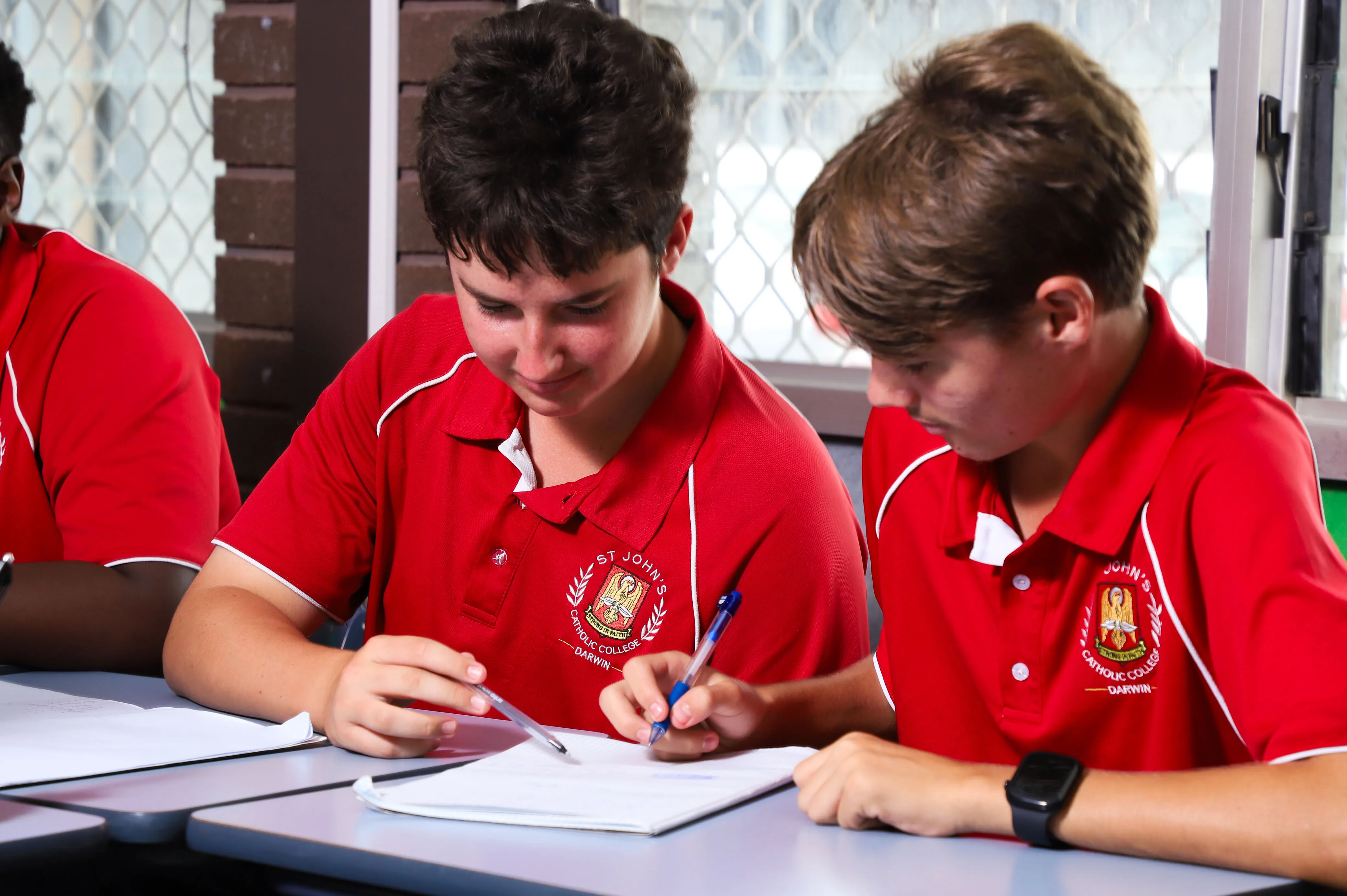
Teaching and Learning Years 10-12
Curriculum and Certification:
The Year 10-12 curriculum is drawn from the South Australian Certificate of Education Board (with the exception of Year 10 Mathematics which is sourced from the Australian Curriculum). Students in Years 10 - 12 work towards achieving the Northern Territory Certificate of Education and Training (NTCET) and the Australian Tertiary Admission Rank (ATAR).
Curriculum Design:
The Northern Territory Certificate of Education and Training, which is derived from the SACE, is a modern, internationally-recognised secondary school qualification designed to equip students with the skills, knowledge, and personal capabilities to successfully participate in our fast-paced global society. In addition to subject specific content and skills, the NTCET is
designed to develop personal capabilities within learners: literacy, numeracy, information and communication technology, critical and creative thinking, personal and social, ethical understanding and intercultural understanding.
| Learning Areas | Personal Capabilities | Vocational Education and Training |
| Disciplinary knowledge, skills and understanding are described in the eight learning areas of the Australian Curriculum. |
The SACE focuses on students developing seven capabilities. | The SACE Board recognises learning that students have achieved outside of the SACE through Vocational Education and Training (VET). |
All Stage 1 and Stage 2 courses are subject to moderation processes of the SACE Board. |
|
Students can gain recognition for up to 150 SACE credits at Stage 1 and/or Stage 2 for successfully completed VET. Please note, not all VET courses earn SACE credits. Students are required to consult the VET & Careers Coordinator. |
Subjects Studied:
Students study Religious Education, English, Mathematics, Exploring Identities and Futures (EIF), Stage 1 and Stage 2 subjects during their senior years of study. Every student’s pathway through the NTCET is unique.
Vocational Education and Training (VET):
Students are able to undertake a range of external vocational education and training courses from Year 10. Students interested in undertaking a VET course are required to meet with the VET and Careers Coordinator.
Distance Education:
St John’s works in partnership with the Northern Territory School of Distance Education and Open Access Centre to provide access to Stage 1 and 2 subjects not on offer at the College. Students demonstrating a high level of academic commitment and independent learning are able to apply to undertake distance education subjects from Year 11.
The NTCET and Benchmarks:
Students typically undertake the NTCET over three years. The NTCET is based on a credit system whereby students must gain 200 credits in a mix of compulsory and non-compulsory subjects across Stage 1 and Stage 2. The College has benchmarks to support students to achieve the NTCET. Students not meeting the required benchmarks are provided the opportunity to undertake the NTCET over additional years.
Pedagogy:
Teaching and Learning is guided by our School Wide Pedagogy (SWP) and encompasses: high expectations of students, higher order thinking skills and academic rigour. Our SWP includes the following phases: direct instruction, practising and deepening (modelling and scaffolding), application of knowledge and skills (higher order thinking skills and problem-based learning).
The Australian Tertiary Admission Rank (ATAR):
The Australian Tertiary Admission Rank (ATAR) is a number between 0.00 and 99.95 that indicates a student’s position relative to all the students completing an Australian Year 12 program. Universities use the ATAR to select students for their courses. Admission to most tertiary courses is based on the student’s selection rank (student ATAR + any applicable adjustments).
Assessment and Reporting:
SEQTA is the primary mode for communicating academic results. Parents / Carers are expected to regularly monitor their child’s academic progress throughout the semester as assessment items are marked.



